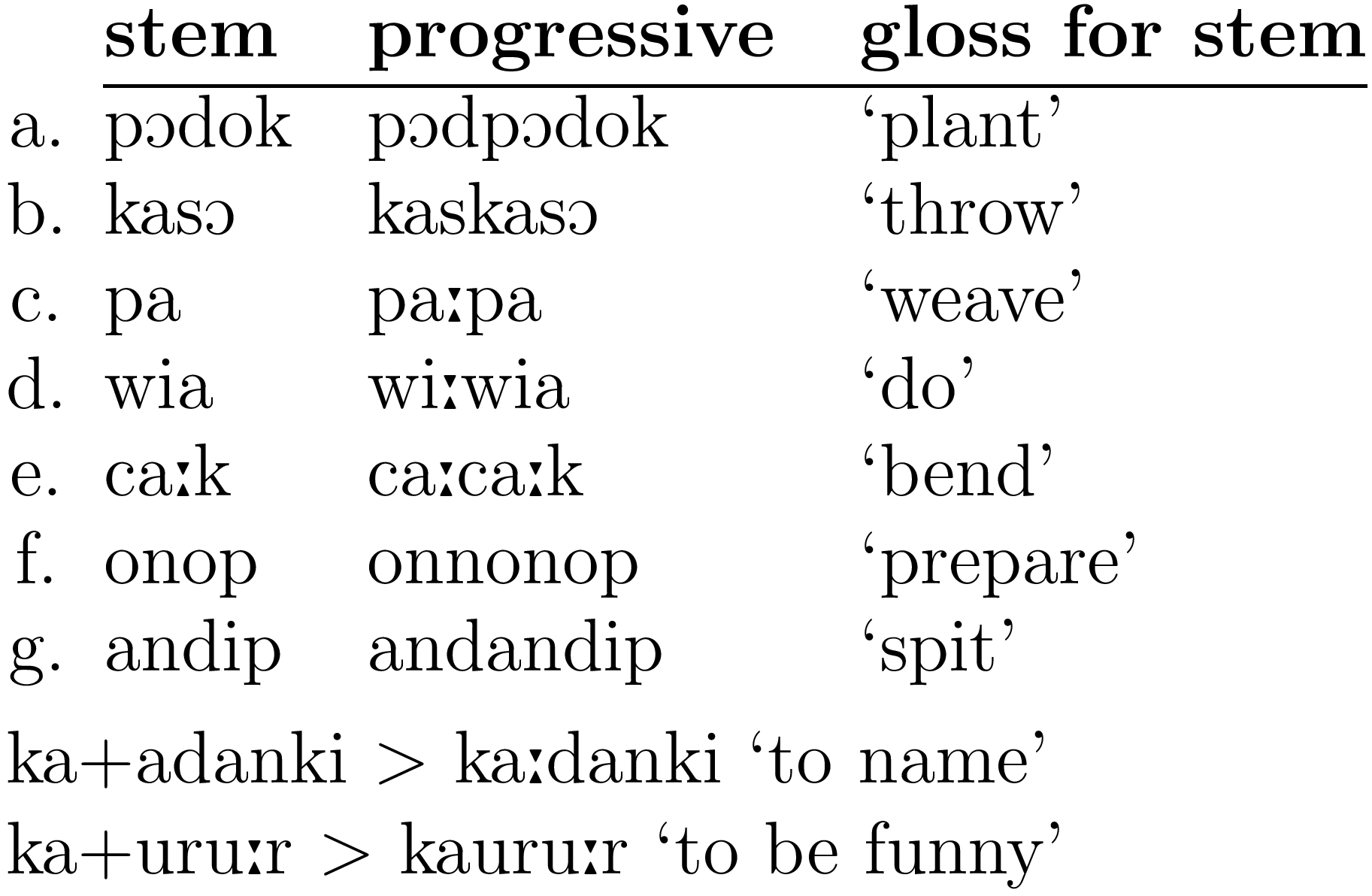the skeleton: its contents, its shape, its function
notes to session 2
a complex autosegmental representation (still not complete)

Classical Arabic morphology
| binyan | perf-act | perf-pass |
| I | katab | kutib |
| II | kattab | kuttib |
| III | kaatab | kuutib |
| … |
| IX | ktabab | — |
A verb form is made up of
- a consonantal root carrying lexical meaning (ktb ‘write’)
- vocalism (a ‘active’, u-i ‘passive’)
- but most importantly (for us) an order of Cs and Vs directing where consonants and vowels go (the template)
- association of Cs and Vs with the template (the skeleton) is left-to-right
- trouble-makers: kattab (why not katbab?), kuutib (why not kuitib)?
- possible solution: split (noncontinuous) geminates (-bab) are worse (more marked, less preferred, less optimal) than unsplit ones
- but then why is ktabab not kkatab? because word-initial geminates are even worse than split geminates
Mokilese reduplication

Levin argues that the reduplicant (the bit copied) must be a single syllable containing three skeletal slots, but it cannot be specified for Cness and Vness. However, this fails to capture cases (f) and (g). By assuming that all syllables have an onset (begin with a consonant), which is potentially empty (unpronounced), we may maintain that the reduplicant is always CVC- with either C potentially empty.
Therefore these data do not argue for the x-skeleton.
do we need syllable structure in addition to the skeleton?
Yes if
- there can be a skeletal point-less onset (or nucleus)
- onsets and/or nuclei may branch
Note the similarity with separating melody and skeleton: this makes sense if there may be floating melody, empty skeletal slot, and many-to-one associations between melody and skeletal slots.
last touched 2012-07-24 22:53:58 CEST

